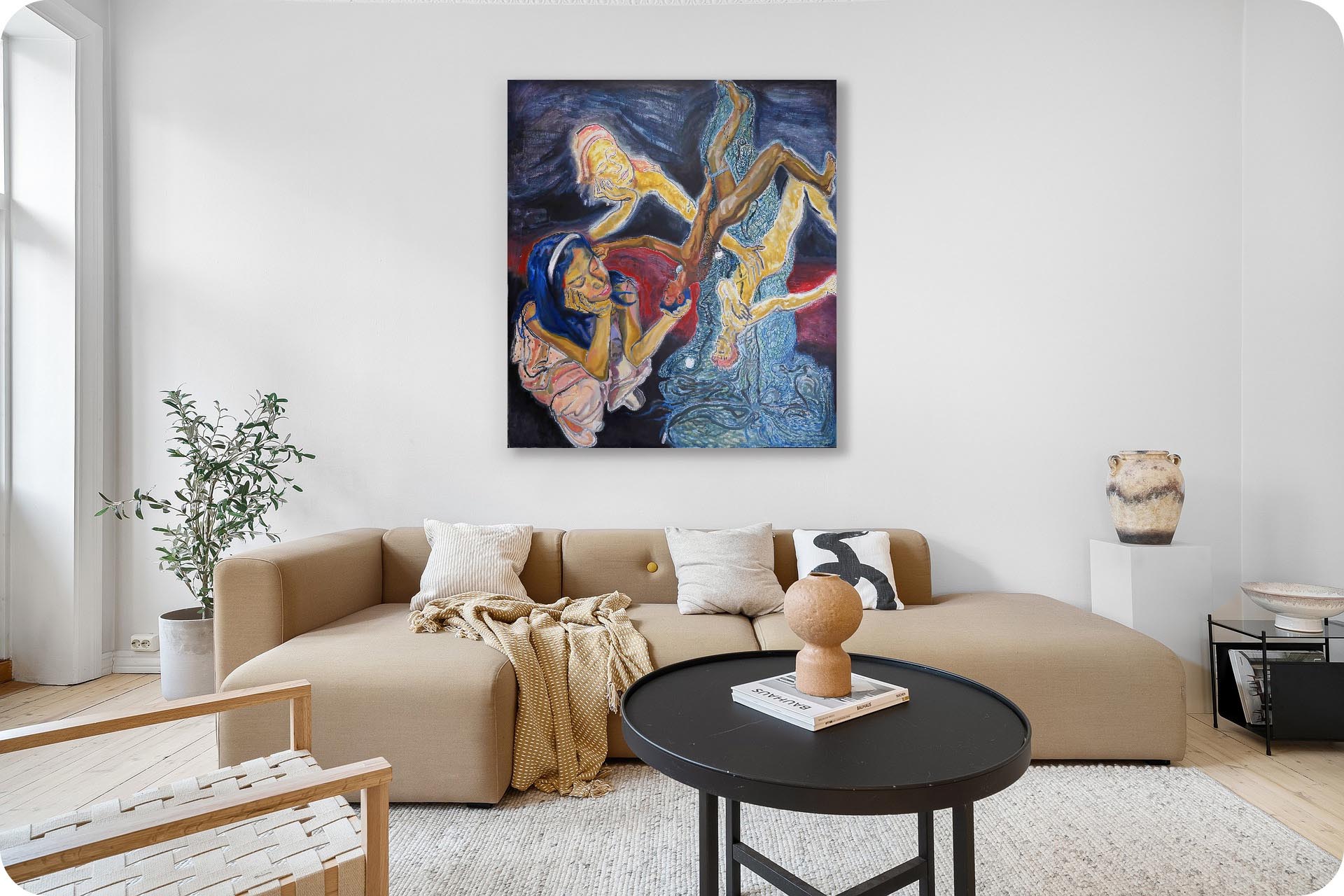This painting was created in 2022. This year, the painting style changed sharply, from the usual low and harmonious gray colors to conflicting bright colors. At the same time, it raised a big question mark about life.
Inches: 74.8 x 82.7 in
Size without the frame: 190 cm x 210 cm
Country: China
Date: 2022
Materials: Acrylic paint on linen
Condition: well preserved
Creative themes and style | My works revolve around the creative concept of "The land of humanity, People on the land". The people in the painting are people in nature, and the lines, shapes, and colors are close to nature. The nature in the painting is nature in the eyes of humans, existing in interaction with humans.I don’t pursue a series of works with a fixed and continuous style. I hope that the style of the pictures will synchronize with the changes in my life and always remain oscillating. The performance of the work must be in sync with the development of one's own life in order to be Sincere and powerful. Ideas are later.
An Interview with Artist Philo by Artphiloso Gallery
If you would like to collect this artwork or know more about the artist, please contact us.
abstract art meaning,flower painting ideas,mini canvas painting,painting on canvas.


The body seems to lose gravity, suspended against a dark background. This visual choice suggests the liberation of the subconscious and gives form to the instability of dream states.
The scale-like textures resemble a net wrapping or pulling at the figure, symbolizing desire, memory, or psychic restraint. They can be read both as a protective shell and as a constraint.
The seated figure in the lower left conveys calmness, while the inverted body in the center is full of tension. The alternation of cool and warm tones creates a contradictory atmosphere, mirroring the clash between wakefulness and dream.
If “Untitled” explored self-division and reflection, this second piece deepens the theme by depicting the reversal of body and soul and the disordered logic of dreams. Both works highlight fluid identity and subconscious imagery.
It combines the symbolic depth of surrealism with figurative expressiveness, generating strong visual tension. Collectors not only acquire a significant contemporary painting, but also an entry into philosophical reflections on dreams, the body, and the soul.
A: Click here to view ARTPHILOSO's Guide for Collectors.
